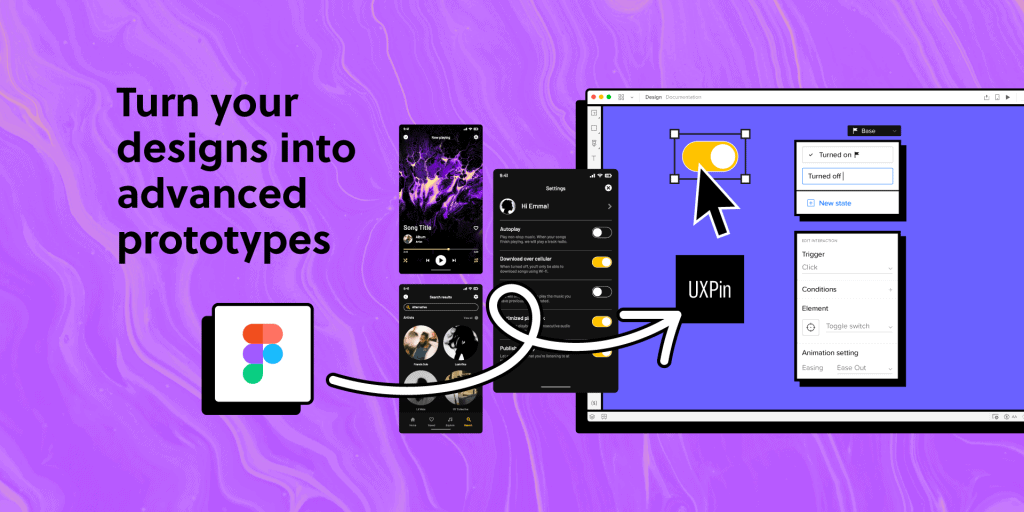The Pros and Cons of Using Figma Software

When it comes to collaborating on design workflows, the need for a single platform that streamlines the process of brainstorming ideas, designing prototypes, and building solutions is critical. A unified platform allows for improved team collaboration, increased efficiency, and a more seamless workflow, all essential for businesses seeking to stay ahead of the curve. Figma, a powerful and versatile design software, has emerged as a popular choice for organizations looking to achieve these goals, providing a comprehensive solution that helps teams align early and stay in sync from the initial idea to plan implementation.
Figma serves as a one-stop shop for all design needs, offering a wide range of features and tools that facilitate real-time collaboration and foster innovation. As businesses continue to search for ways to improve their design processes and maximize productivity, Figma stands out as a key player in the market. In this article, we will delve into the pros and cons of using Figma software, examining its key features, use cases, and pricing plans to help you decide whether it’s the right choice for your organization’s needs.
Figma – The Collaborative Interface Design Tool
Figma is a cutting-edge design tool that connects everyone involved in the design process. Their primary goal is to make design accessible to everyone, creating a future where design is more collaborative, borderless, transparent, community-driven, and open-sourced. Figma allows teams to deliver better products faster by connecting all stakeholders in the design process. From brainstorming ideas in FigJam—an online whiteboard—to designing prototypes and building solutions, Figma keeps teams aligned and in sync throughout the entire journey.

The platform empowers users to explore ideas together, create and iterate with live collaboration, and establish powerful design systems that are consistent, searchable, and accessible to the entire company. Figma’s commitment to fostering a collaborative and inclusive design environment makes it an invaluable tool for businesses looking to stay ahead of the curve.
The Cons or Disadvantages of Figma

While Figma has many benefits, users may encounter a few drawbacks. In this section, we will delve deeper into the most common cons of using Figma:
- Internet dependency: Figma relies on a stable internet connection to function effectively as a cloud-based tool. Users in areas with poor connectivity or during internet outages may face difficulties in accessing the platform and its features. This can hinder productivity and lead to potential bottlenecks in the design process.
- Limited offline support: Figma offers a limited offline mode but does not provide the full feature set available online. In offline mode, users will be unable to access collaboration tools and other advanced features, which may limit the platform’s usefulness in situations where an internet connection is unavailable or unreliable.
- Learning curve: For new users, particularly those not well-versed in design software, Figma’s interface and tools can be overwhelming at first. The learning curve can be steep, requiring time and effort to become proficient in using the platform. This may lead to initial frustration and slower adoption rates among team members who are new to the software.
- Performance issues: Figma may experience performance issues when handling large projects with numerous components. Users may encounter slow loading times, occasional crashes, or lag when navigating through complex designs. These performance issues can negatively impact the user experience and slow down the design process, particularly for teams working on large-scale projects.
- Compatibility: Figma is designed to work seamlessly on modern hardware and operating systems; however, it may not be compatible with older devices or systems. This limitation can affect users who are using outdated hardware or those who have not upgraded their operating systems, potentially restricting the platform’s accessibility and usability for some team members.
The Pros or Advantages of Figma

Despite its drawbacks, Figma boasts numerous advantages that make it a powerful design tool. Here are some of its key benefits:
- Real-time collaboration: Figma enables seamless collaboration between team members, allowing them to work together in real-time and stay aligned throughout the design process. This fosters a more efficient workflow and helps prevent miscommunication or duplicated work, ultimately saving time and resources.
- Platform agnostic: Figma is accessible through a web browser, which means it is compatible with various operating systems and devices, including Windows, macOS, and Linux. This platform-agnostic approach eliminates the need for users to install software or worry about compatibility issues, making Figma a convenient choice for diverse teams.
- Version control: Figma automatically saves and tracks changes made to designs, making it easy to view and revert to previous versions if necessary. This version control feature simplifies the process of managing design iterations, reducing the risk of losing work or making unwanted changes.
- Integration with other tools: Figma offers integrations with many popular project management and communication tools, such as Slack, Trello, and Jira. These integrations streamline the design process and improve team communication, ensuring that design updates are easily shared and discussed among team members.
- Scalability: Figma’s design system features make it easy to scale design projects, ensuring consistent branding and design elements across an organization. By creating a centralized library of reusable assets, components, and styles, Figma allows teams to maintain design consistency and quickly implement updates across multiple projects.
- Accessibility: Figma’s web-based platform and user-friendly interface make it accessible to both designers and non-designers alike. This inclusivity encourages cross-functional collaboration and enables team members from various disciplines to contribute to the design process.
- Customizable plugins: Figma supports a wide range of plugins, allowing users to tailor their design experience and extend the platform’s functionality to meet specific needs. These plugins can automate repetitive tasks, enhance design workflows, and integrate with external services, providing users with a more personalized and efficient design environment.
Figma Key Features
Figma is a feature-rich platform that caters to the diverse needs of its users by offering a range of powerful tools. Combining the functionality of Figma, an all-in-one design platform, and FigJam, an online whiteboard for teams, the platform delivers the following key features:
- Design features: Figma provides a comprehensive suite of design tools, allowing users to create and edit vector graphics, typography, and layouts with ease and precision.
- Prototyping features: Users can create interactive prototypes with animations, transitions, and responsive design capabilities, making it simple to test and iterate on designs.
- Design systems features: Figma offers centralized libraries for maintaining and sharing assets, components, and styles across an organization, ensuring design consistency and scalability.
- Collaboration features: The platform supports real-time collaboration, commenting, and version history management, fostering effective teamwork and communication.
- Online whiteboarding: FigJam empowers users to brainstorm, diagram, and engage in strategic planning through a versatile online whiteboard.
- Strategic planning: Figma provides tools that facilitate project management and communication among team members, streamlining the design process and improving overall efficiency.
- Team meetings: Figma’s virtual meeting spaces enable remote collaboration, ensuring that teams can stay connected and productive, regardless of their location.
- Diagramming: The platform offers a variety of tools for creating flowcharts, wireframes, and other visual diagrams, making it easy to communicate ideas and plan projects effectively.
Figma Use Cases
Figma is used by a diverse range of organizations, including industry-leading companies like Slack, Twitter, Dropbox, Square, New York Times, and more. Its versatile feature set makes it suitable for various use cases, such as:
- UI design: Creating and refining user interfaces for websites and applications.
- UX design: Mapping out user experiences and optimizing usability.
- Wireframing: Developing early-stage concepts and layouts for websites and applications.
- Diagramming: Creating visual representations of complex ideas, processes, or systems.
- Brainstorming: Collaborating with team members to generate new ideas and solutions.
- Agile workflows: Managing iterative design and development processes.
- Strategic planning: Organizing project timelines, goals, and resources.
- Templates: Utilizing pre-built design templates for faster project completion.
- Remote design: Facilitating collaboration among geographically dispersed team members.
- Agencies: Providing design services to multiple clients simultaneously.
- Figma for education: Teaching and learning design principles and techniques.
Figma Pricing and Costs
Figma offers a variety of pricing plans to cater to different user needs:
Figma for design + prototyping:
- Starter: Free Forever
- Figma Professional: $12 per editor/month (Billed annually) or $15 month-to-month
- Figma Organization: $45 per editor/month (Annual billing only)
FigJam for whiteboarding:
- Starter: Free Forever
- FigJam Professional: $3 per editor/month (Billed annually) or $5 month-to-month
- FigJam Organization: $5 per editor/month (Annual billing only)
For larger organizations, there’s an Enterprise plan that offers advanced security and more flexible controls:
- $75 per Figma editor/month
- $5 per FigJam editor/month
- Annual billing only
Conclusion
Figma enables teams to collaborate efficiently and produce high-quality designs. By offering a comprehensive set of features, including design and prototyping tools, design systems management, and real-time collaboration, Figma streamlines your design process and makes it more accessible to users with varying levels of expertise. Although it does have some limitations, its benefits far outweigh these drawbacks, making it an excellent choice for businesses and teams seeking to improve their design workflows and remain competitive. With the above insights, deciding if it’s the right tool for your team is easier.

